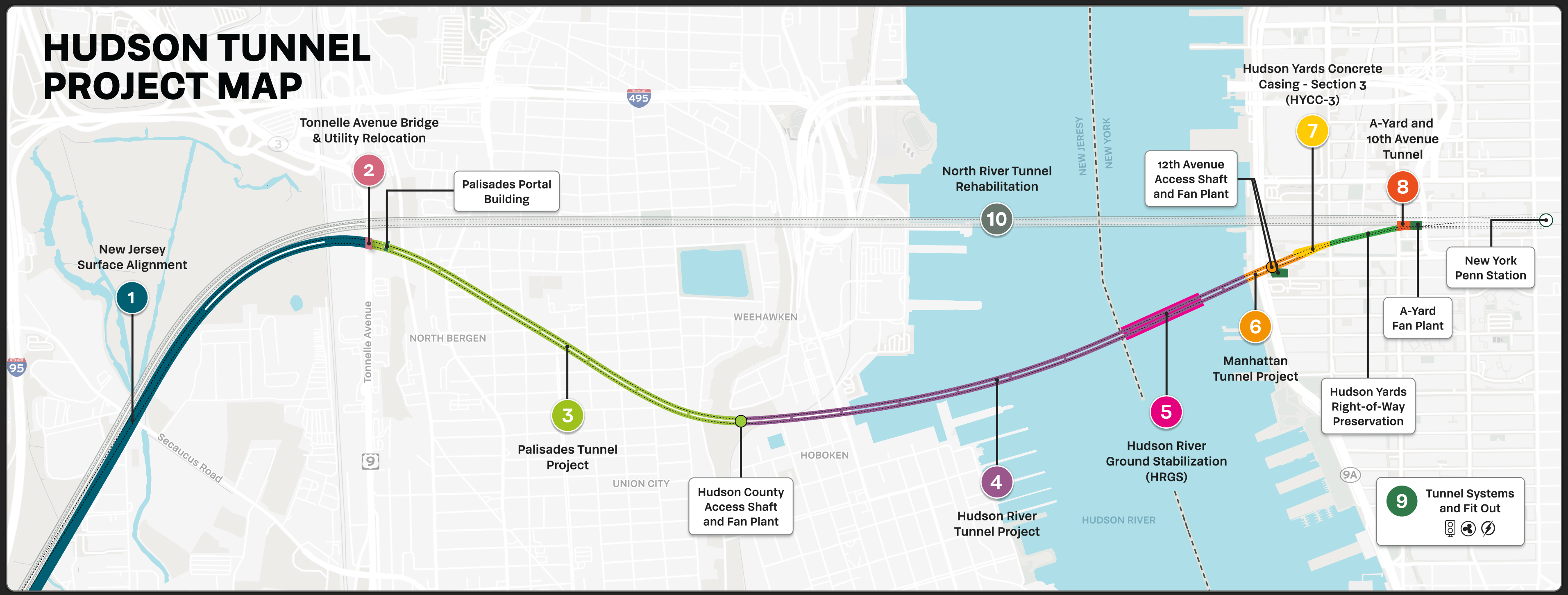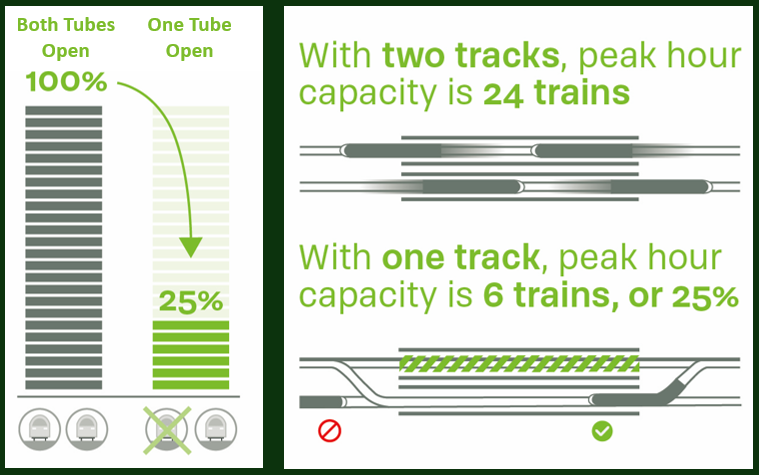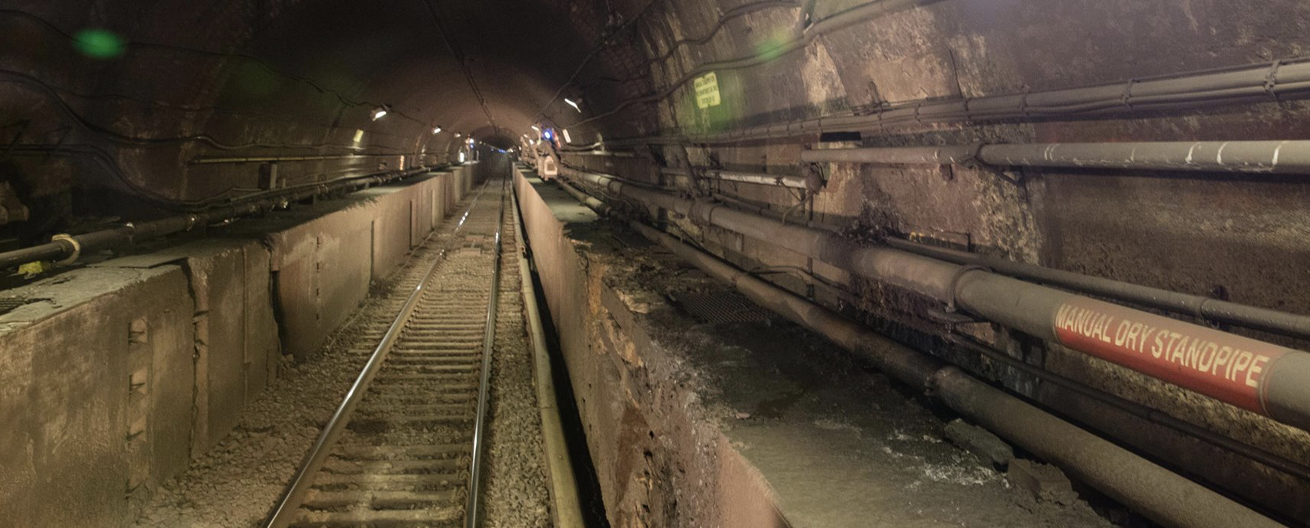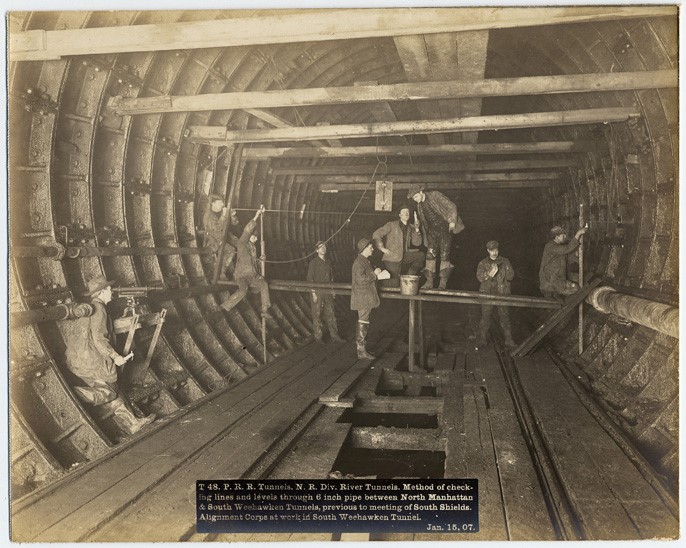The Hudson Tunnel Project will make two crucial improvements to the national rail network:
- Building nine miles of new passenger rail track between New York and New Jersey, including nearly five miles of tunnel boring to construct a new, two-tube tunnel under the Hudson River.
- Rehabilitating the North River Tunnel, which has been in service since 1910 and is a source of chronic delays for hundreds of thousands of daily passengers.
When the Hudson Tunnel Project is finished, there will be four modern tracks between New Jersey and New York where there are currently only two. This will increase operational flexibility and redundancy for Amtrak and NJ TRANSIT to support reliable, on-time service.
The Hudson Tunnel Project consists of ten distinct construction packages. Five of these projects are currently in progress.

Urgency
The Northeast Corridor is the most heavily used passenger rail line in the United States. The corridor stretches from Washington, D.C. to Boston and is an economic engine for the entire country, moving a region that generates 20% of the nation’s GDP. The ten-mile stretch between Newark, New Jersey, and New York Penn Station is the busiest, most congested section of the corridor.
Amtrak and NJ TRANSIT service through this critical section of the Northeast Corridor relies on the 115-year-old North River Tunnel. This tunnel contains just two tubes, one carrying trains into New York and one taking them into New Jersey. Any disruption in one tube impacts travel in both directions.

Wear and tear from many years of service was compounded when Hurricane Sandy flooded the tunnels in 2012. Chlorides left behind after the floodwater receded continue to damage the tunnel and its electrical equipment.

Today, the aging tunnel is a leading cause of delays for riders. Any further reductions in service through the tunnel would have massive negative impacts on the region and the national economy.
Benefits for the Region
When it is finished, the Hudson Tunnel Project will provide long-term reliability to the regional and national rail network for the NJ TRANSIT and Amtrak customers who rely on these rail services.
Construction is already generating significant economic benefits, including:
- Supporting over 95,000 direct, indirect, and induced jobs.
- Generating $19.6 billion in economic activity.
- Creating new business for U.S. suppliers and manufacturers through the Buy America requirement that applies to federally funded purchases.
History of the North River Tunnel

The North River Tunnel went into service in 1910 and has been used continuously ever since.
The tunnel was built by the Pennsylvania Railroad using a technique called the “shield method.” Construction crews worked inside a giant steel cylinder, digging the tunnel by hand and installing massive cast-iron rings that make up the tunnel walls as they went. Separate tunnel crews started on each side of the river, meeting in the middle to complete the tunnel.
While the original plans called for two tunnels, only one was ever completed. The Hudson Tunnel Project is finally finishing the work that started more than a century ago and updating the North River Tunnel to modern standards.
